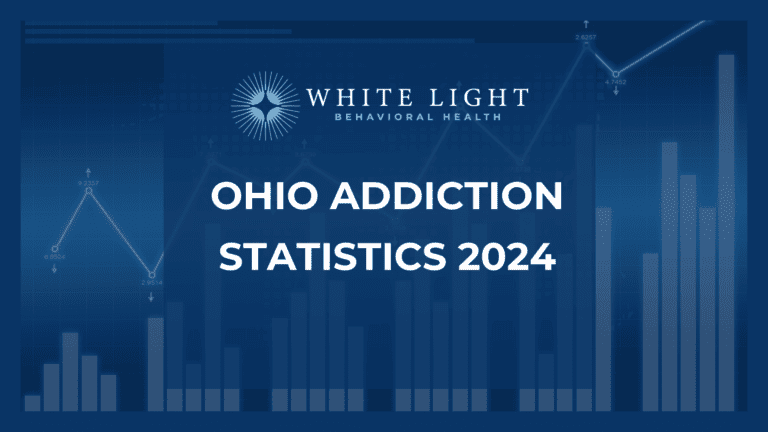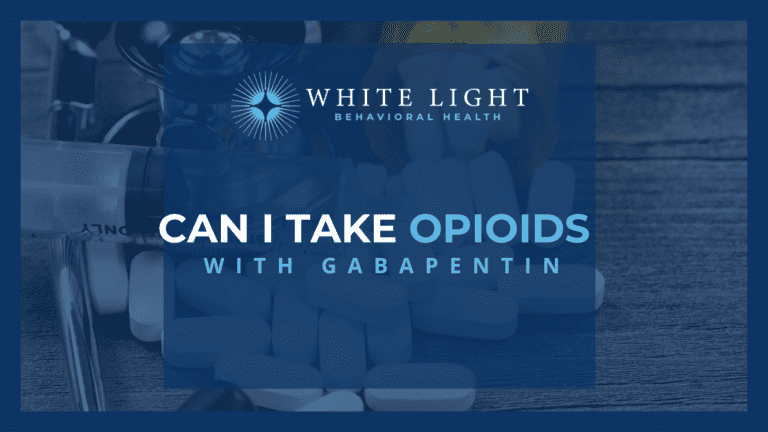
At White Light Behavioral Health, our comprehensive rehabilitation program for Suboxone addiction addresses the unique challenges faced by individuals seeking to overcome dependence on this medication. Recognizing the complexity of Suboxone dependency, as outlined in the Substance Abuse and Mental Health Services Administration’s (SAMHSA) “The Facts about Buprenorphine for Treatment of Opioid Addiction” (2014), our approach integrates targeted medical interventions with personalized counseling and support. Suboxone, while beneficial in the treatment of opioid addiction, can itself become a source of dependency. Our program is designed to navigate this delicate balance, offering individuals the tools and support necessary to transition away from Suboxone use in a safe and controlled manner.
What Is Suboxone?
Suboxone is the brand name for the combination of buprenorphine and naloxone which is often used as a detox treatment for opiate addiction. Suboxone is a controlled substance classified as Schedule III, meaning it can only be prescribed by medical professionals with special training and certification. Per the Drug Enforcement Administration (DEA), drugs with a Schedule III classification are defined as having moderate to low potential for physical and psychological dependence.
Who Needs Rehab for Suboxone?
- Individuals who initially used Suboxone as a step towards overcoming opioid addiction but have now found themselves dependent on it.
- Those experiencing withdrawal symptoms when attempting to reduce or cease Suboxone use.
- Persons who have made multiple attempts to taper off Suboxone on their own but have not been successful.
- Individuals looking for a comprehensive support system to safely navigate the transition away from Suboxone.
- People seeking to address not only the physical aspects of Suboxone dependence but also the psychological factors contributing to their addiction.
- Anyone ready to embark on a holistic journey to recovery, integrating both medical and therapeutic approaches to achieve lasting sobriety.
Suboxone Detox And Rehab Programs in Columbus, Ohio
At White Light Behavioral Health, we are committed to providing a pathway to recovery for those seeking to overcome dependence on Suboxone, a medication often used in the treatment of opioid addiction. Understanding the complexities of this journey, our Suboxone detox services are designed with a deep commitment to personalized care, ensuring each client’s unique needs are met with the utmost attention and compassion. In addition to Suboxone detox, we offer specialized programs for a broader range of opioid-related dependencies, including:
- Fentanyl Detox: Given the extreme potency of fentanyl and its significant risk of dependence and overdose, our Fentanyl Detox program offers targeted care to safely navigate the withdrawal process.
- Opioid Detox: Our comprehensive Opioid Detox services cater to those dealing with addiction to various opioids, providing a holistic approach to address the physical and psychological aspects of dependence.
- Heroin Detox: Tailored to individuals seeking to break free from heroin addiction, this program emphasizes a supportive and medically supervised environment for effective detoxification and recovery.
Comprehensive Rehab Programs for Suboxone Addiction
- Residential Rehab: Offers intensive, around-the-clock care in a structured environment for those beginning their recovery journey, including medical detoxification to safely manage withdrawal symptoms.
- Partial Hospitalization Program (PHP): A step down from residential care, PHP provides a structured treatment environment with the flexibility for clients to return home in the evenings, combining individual and group therapy with wellness activities.
- Intensive Outpatient Program (IOP): For those transitioning further into recovery or needing less intensive care, IOP allows clients to maintain their daily commitments while participating in a comprehensive treatment schedule.
Why Choose White Light for Suboxone Rehab in Columbus, Ohio

Choosing White Light Behavioral Health for Suboxone detox means selecting a facility committed to your successful recovery. Here are several reasons why White Light stands out as the premier choice for those seeking to overcome Suboxone dependency in Ohio:
- Expert Medical Care: Our dedicated team of healthcare professionals specializes in addiction treatment, offering expert care tailored to the complexities of Suboxone withdrawal.
- Holistic Treatment Approach: We address the multifaceted nature of addiction, ensuring clients receive comprehensive support that spans medical, psychological, and physical health aspects.
- Customized Care Plans: Recognizing the uniqueness of each recovery journey, we provide personalized treatment plans that enhance the effectiveness of detox and support long-term sobriety.
- Supportive Environment: Our Ohio facility offers a safe, nurturing space conducive to healing and recovery, allowing clients to focus on their journey to wellness with minimal external stressors.
Understanding Suboxone Withdrawal

Withdrawal from Suboxone can present a unique set of challenges, as the medication itself is used to mitigate opioid withdrawal symptoms. Individuals may experience a range of symptoms including nausea, headaches, mood swings, and cravings, which can vary in intensity based on the duration of use and dosage. The complexity of Suboxone withdrawal underscores the importance of medically supervised detox, providing a safe environment where symptoms can be managed effectively. At White Light Behavioral Health, our medical team is experienced in handling the nuances of Suboxone withdrawal, ensuring clients receive the appropriate care and support throughout their detox journey.
What Can You Expect After Suboxone Detoxification?
- Once you’ve managed to successfully detox from Suboxone, your path to recovery will still be ongoing. At that point, you’ll have gotten through many of the hardest parts, but it will be important that you stay committed to improving yourself. If you want to be successful and avoid relapses, your best bet will be to continue with counseling services of some kind. Whether it be group therapy or one-on-one counseling sessions, you must continue to address the mental disorder aspects of your addiction.
- The psychological effects of addiction tend to be long-lasting, and there will still be challenges to overcome after you’ve detoxed from opiates and Suboxone. However, if you’re willing to continue putting in the time and effort, there’s no reason you can’t keep up your progress while maintaining a happy, healthy, and functional life.
Locating White Light Behavioral Health For Suboxone Detox
Take the First Step Toward Recovery From Suboxone
Setting out on the path to recovery from Suboxone addiction is a significant step towards reclaiming your life. At White Light Behavioral Health, we are ready to guide you through the detox process and support your transition into a life free from dependency. If you or someone you love is struggling with Suboxone addiction, we encourage you to reach out to us. Learn more about our detox program and how we can assist you or your loved one in taking the first step toward recovery and healing.
Frequently Asked Questions About Suboxone Detox
How does White Light Behavioral Health address the risk of relapse in Suboxone rehab?
We implement a range of relapse prevention techniques, including continuous monitoring, education, and building coping strategies, to reduce the risk of relapse and support long-term recovery.
Can I continue working while participating in the Suboxone rehab program at White Light Behavioral Health?
Depending on the intensity of the treatment plan, some clients may be able to continue working. We offer flexible scheduling and outpatient services to accommodate the needs of our clients while ensuring effective treatment.
How long does Suboxone detox take?
The duration of Suboxone detox varies for each individual, depending on factors such as the length and dosage of Suboxone use, as well as the person’s overall health. Typically, the acute phase of withdrawal can last from a few days to a week, but our medical team provides a personalized assessment to offer a more specific timeline tailored to each client’s needs.
What should I expect during Suboxone detox?
During Suboxone detox, clients can expect to experience withdrawal symptoms that may include nausea, headaches, mood swings, and cravings. White Light Behavioral Health’s medical team manages these symptoms through medication and supportive care, aiming to minimize discomfort and ensure safety throughout the detox process.
Is detox from Suboxone enough for recovery?
While detox from Suboxone is a crucial first step in overcoming dependency, lasting recovery typically requires ongoing treatment and support. After detox, White Light Behavioral Health offers a range of services including therapy, counseling, and aftercare planning to address the psychological aspects of addiction and support long-term sobriety.
Does White Light accept insurance for detox services?
Yes, White Light works with many insurance providers to cover the cost of detox and subsequent treatment services. Our admissions team can assist with insurance verification and exploring your coverage options, ensuring you can access the care you need.
Can family members be involved in the treatment process?
Family involvement is encouraged and can be a vital component of the recovery process. White Light offers opportunities for family participation through therapy sessions and educational programs, aiming to rebuild trust, enhance support networks, and facilitate a comprehensive recovery for the client.



